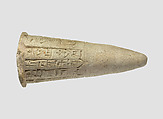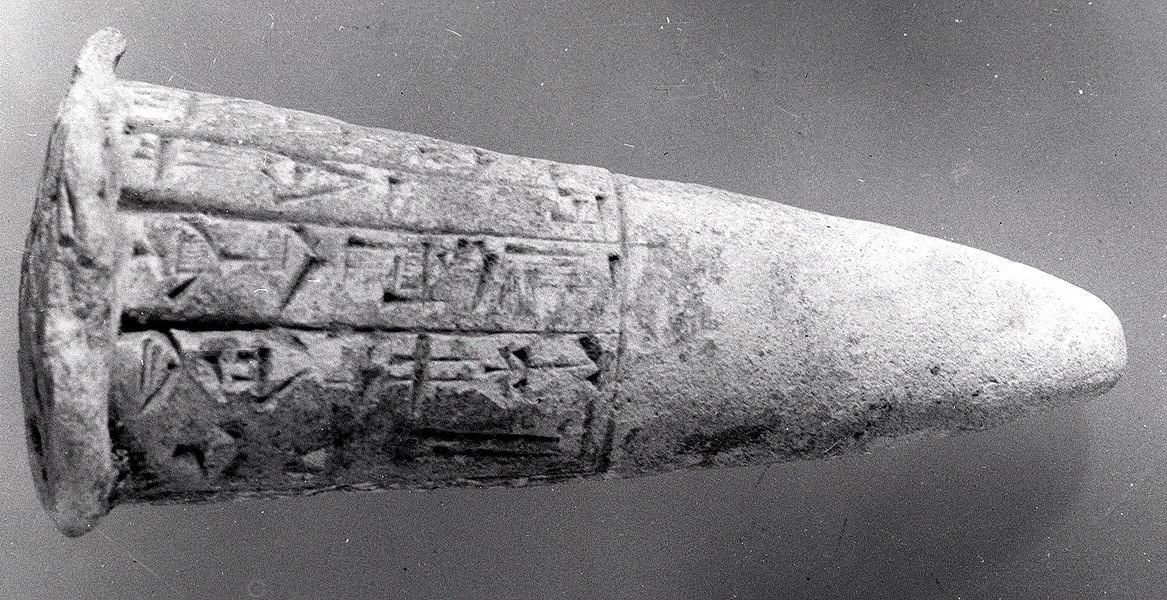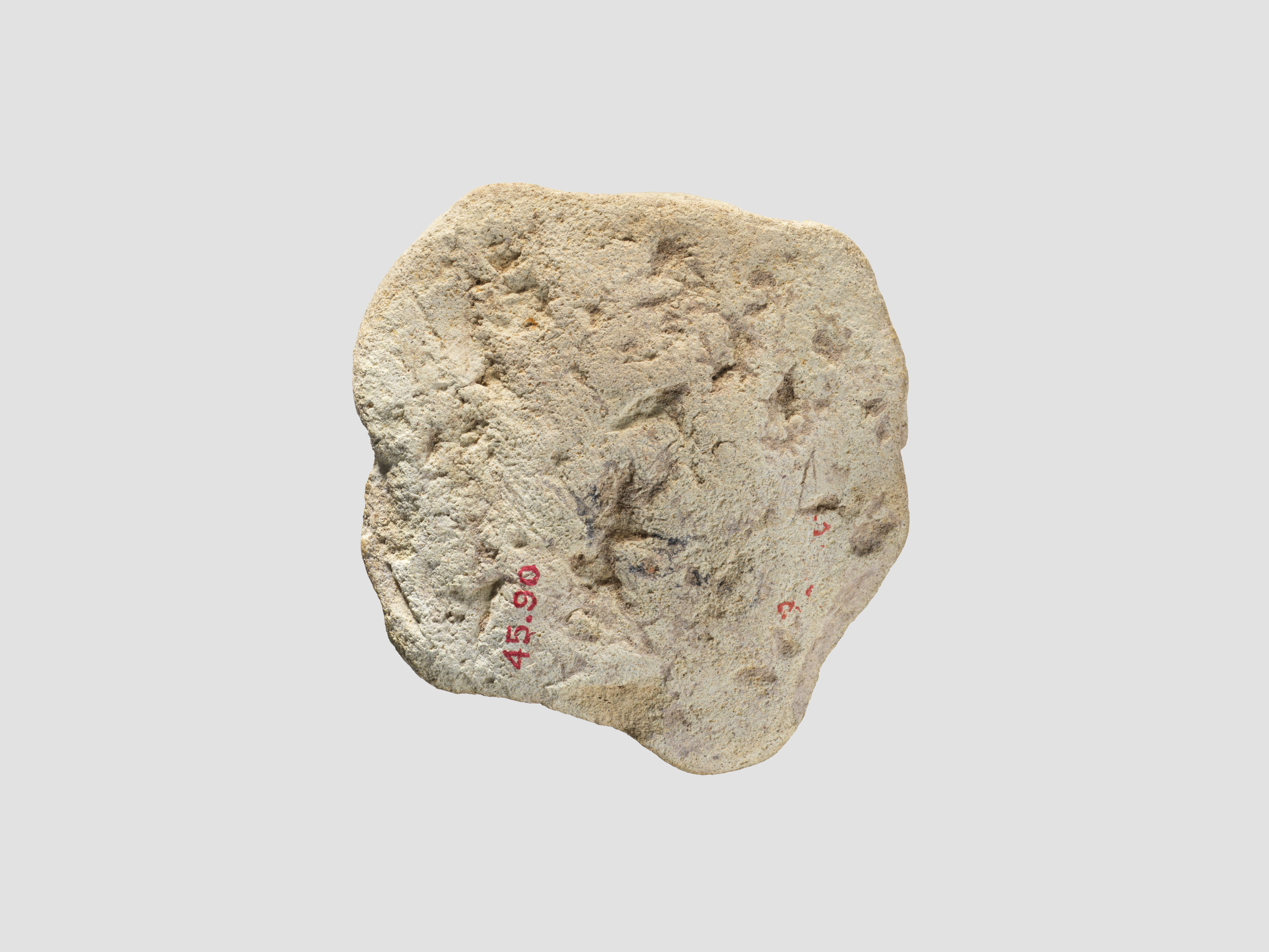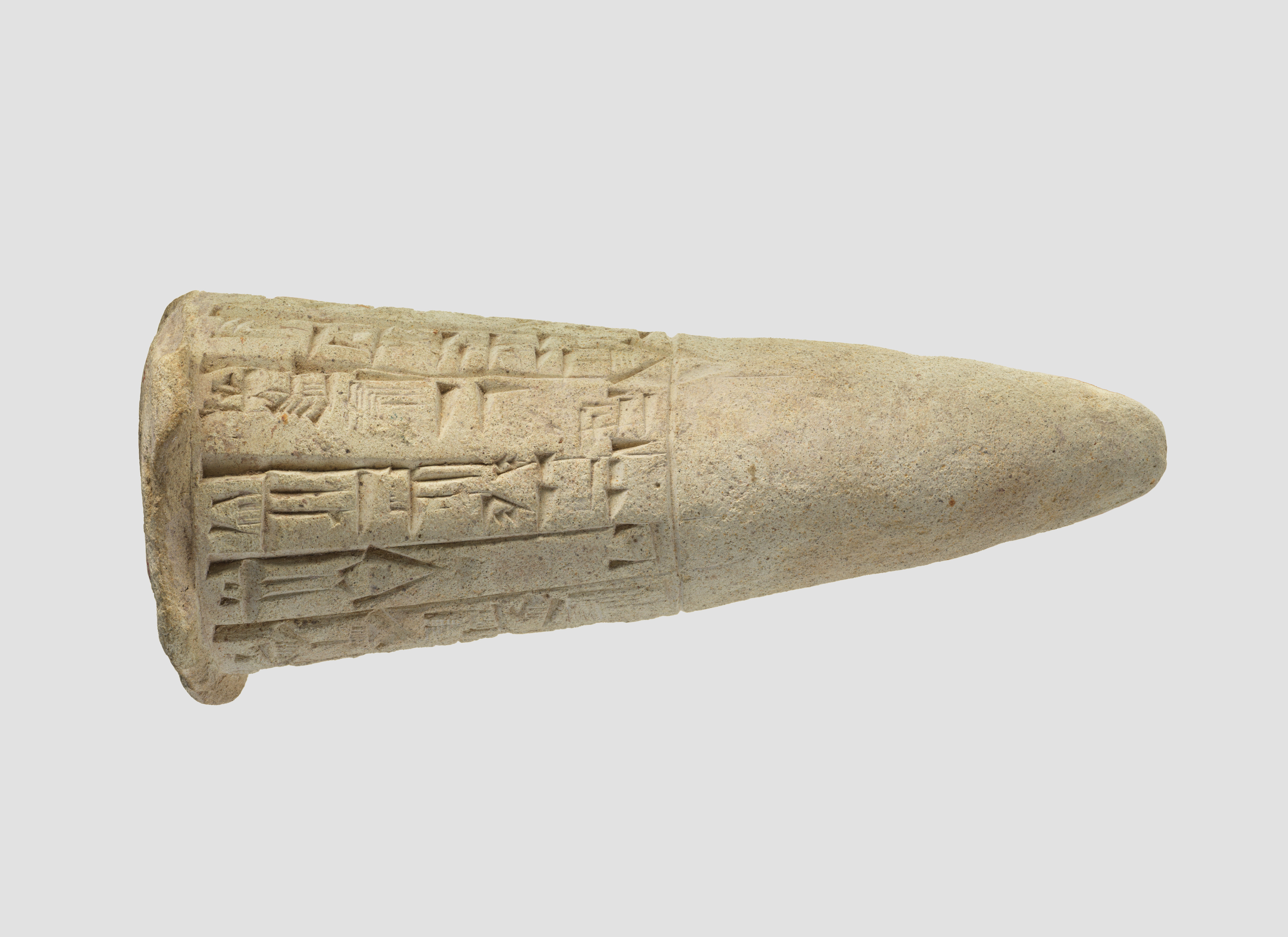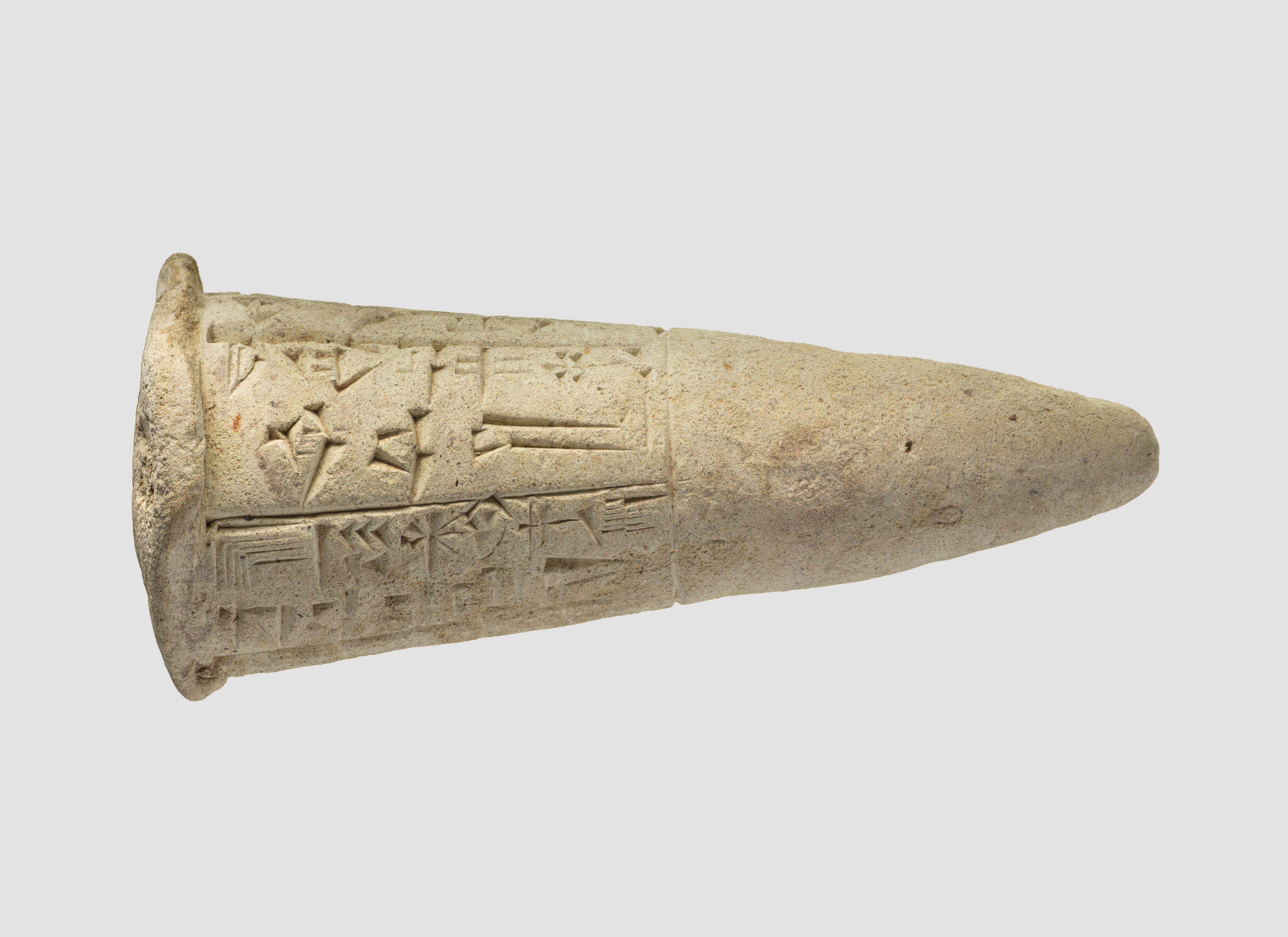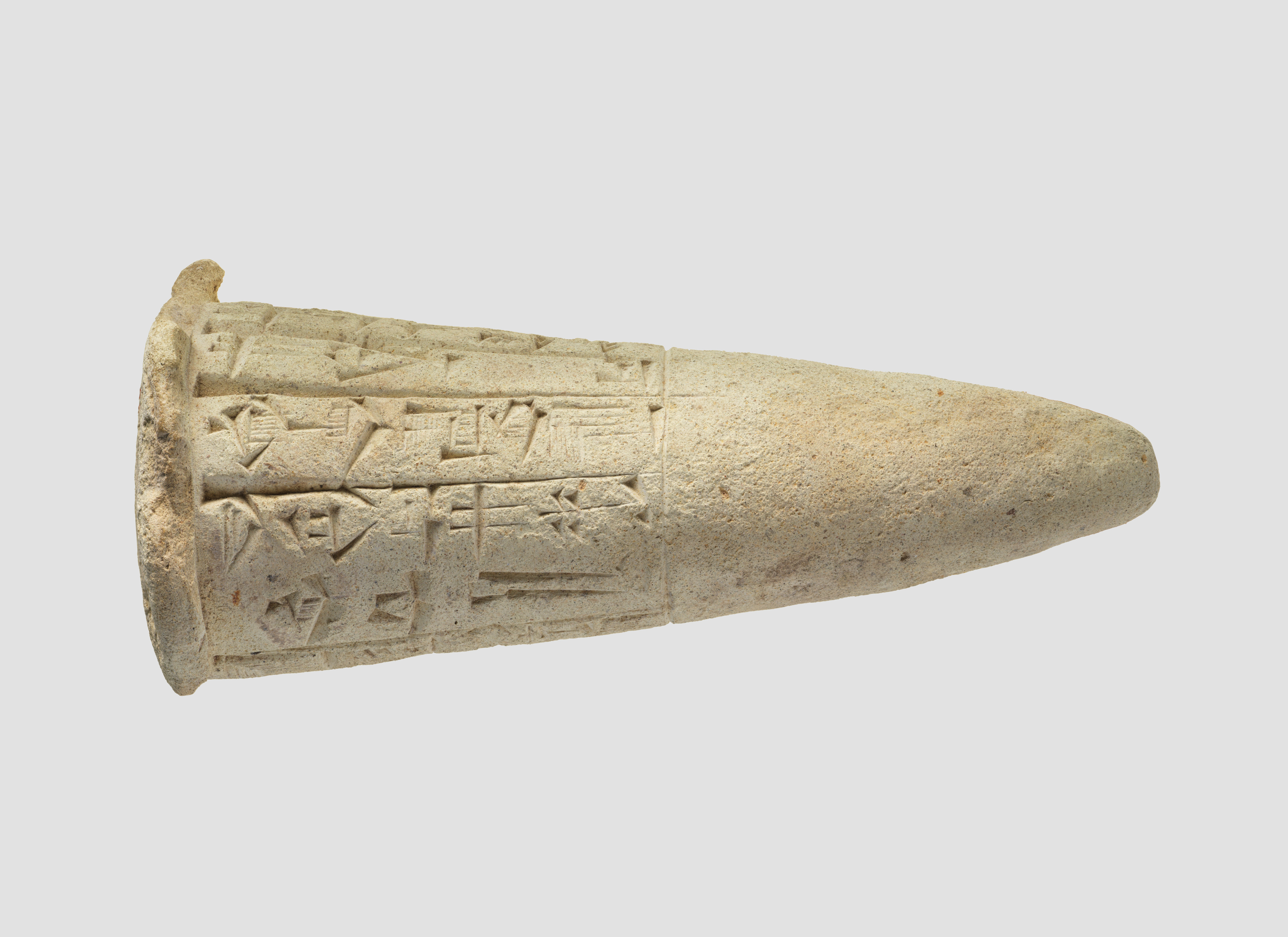Votive cone with cuneiform inscription of Gudea: dedicated when Gudea built the Eninnu temple for the god Ningirsu
Not on view
The invention of writing in approximately 3300 B.C. was one of many developments in administrative technology--including the use of geometric tokens for counting and cylinder seals to guarantee transactions--that accompanied the growth of the first cities and states in southern Mesopotamia. Proto-cuneiform is the name given to the earliest form of writing--pictograms that were drawn on clay tablets. Gradually, the pictograms became abstracted into cuneiform (Latin, "wedge-shaped") signs that were impressed rather than drawn. At its greatest extent, cuneiform writing was used from the Mediterranean coast of Syria to western Iran and from Hittite Anatolia to southern Mesopotamia. It was adapted to write at least fifteen different languages. The last dated cuneiform text has a date corresponding to A.D. 75, although the script probably continued in use over the next two centuries.
This clay cone is inscribed with cuneiform text which reads from left to right. The inscription states that Gudea, ruler of Lagash, dedicated it when he built the Eninnu temple for the god Ningirsu. In a lengthy hymn, Gudea recounts the dream that directed him to renovate the Eninnu temple. The work commemorated by this votive cone ends with the procession of the statue of Ningirsu into his new "house".
Due to rights restrictions, this image cannot be enlarged, viewed at full screen, or downloaded.
This artwork is meant to be viewed from right to left. Scroll left to view more.
